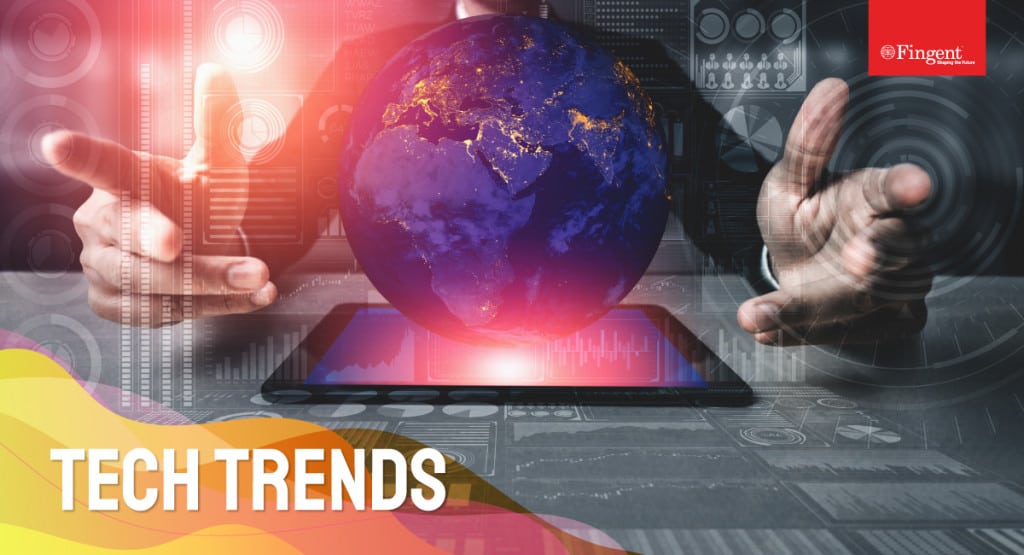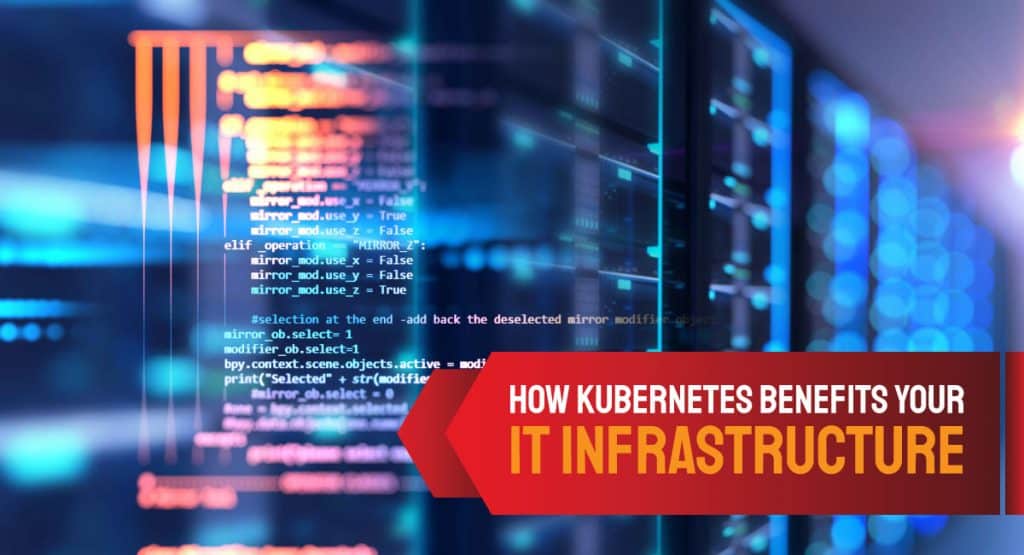Tag: IT Infrastructure
Why and when does an enterprise require hyperconverged infrastructure?
Enterprises and businesses in all sectors strive for the most efficient infrastructure. The explosion of business data poses additional challenges to IT decision-makers. Weak storage solutions could be disastrous for a business. Organizations need to invest in a reliable IT solution that will bring together all IT infrastructure components. They need a solution that will increase overall workplace productivity and reduce cost.
Hyperconverged infrastructure can be the perfect solution for enterprises. It provides uniform scaling along with the simplicity of deployment and ease of management. These features of HCI translate into operational efficiency and reduced costs. As businesses slowly emerge from the fragile economy caused by the coronavirus impact, hyperconverged infrastructure can help them come back strongly.
Let’s have a look at what hyperconverged infrastructure is and how you can benefit from it.
What is hyperconverged infrastructure?
Hyperconverged infrastructure (HCI) is an IT framework. It combines computing, networking, and storage into a single turnkey platform to increase scalability and reduce data center complexity. Hyperconverged platforms usually run on standard, off-the-shelf servers and include a hypervisor for virtualized computing and networking and software-defined storage. Hyperconverged platforms are designed for scalability. For example, it allows you to cluster multiple nodes for creating pools of shared storage and compute resources.
Compared to traditional enterprise storage infrastructure, you can customize hyperconverged infrastructure to make it flexible and easy to manage. It can provide the agility of infrastructure without relinquishing control of your hardware.
Why and when does an enterprise need hyperconverged infrastructure?
Hyperconverged infrastructure offers scalability, reliability, data protection, and more. However, it does not mean HCI is for everyone. It is not recommended for applications that need low latency and contend with high I/O rates. For applications with the right workload, it proves useful in addition to the data center reducing costs and simplifying IT.
Initially, Virtual Desktop Infrastructure and other general-purpose workloads with fairly predictable resource requirements started using hyperconverged infrastructure systems. However, it has become a suitable platform for enterprise applications, private cloud, edge computing deployments, and databases. In other words, a hyperconverged infrastructure system can be used by smaller enterprises that need faster and more reliable storage solutions.
With the landscape of technology evolving faster than ever before, enterprises are increasingly moving to the cloud. As workload requirements grow, organizations realize the need to add nodes to their system. To achieve this, they need a 100% software-defined storage solution that aggregates the storage and compute performance between servers and nodes.
That is why enterprises need a hyperconverged infrastructure system. It can provide such necessary solutions, replace silos of servers, storage, and virtualization, and avoid the need for separate management tools and processes.
As technology begins to settle down, the rate of HCI adoption is expected to increase soon. So, it is crucial to know its benefits and make an informed decision.
Read more: 11 Tech Trends That Will Disrupt Businesses in The Next 2 Years
12 benefits of hyperconverged infrastructure
1. Simpler design
Though hyperconverged infrastructure is not cloud-based, it is ideal for the cloud era. It comes with a framework that has a flexible and simple design. Hyperconverged infrastructure eliminates silos and other barriers that slow down development. In this way, it helps the organization to accomplish most tasks more swiftly. In the current fast-paced world, having the ability to act quickly is vital.
2. Scalability
Scalability has been the top reason for many enterprises to choose HCI. Each hyperconverged infrastructure appliance is a self-contained unit that is designed from the ground up that maximizes compatibility. It allows expansion of data center capacity by simply attaching an additional unit.
An HCI cluster is made up of preconfigured, and self-contained building blocks called nodes. Since nodes can be pre-optimized, admins can easily add them without having to contend with integration issues.
3. Ease of implementing hybrid systems
Hyperconverged infrastructure combines virtualized computing and networking with software-defined storage. This facilitates identical software deployment, whether hosted on the cloud or at the data center, meaning that a team can quickly deploy applications on-premise and combine them with a public cloud. That makes it perfect for any enterprise that plans to build a hybrid infrastructure.
Read more: Hybrid Cloud Infrastructure: How It Benefits Your Business
4. Simplified management
With a traditional system, an organization would require specialists to manage each of the different elements: storage, compute, and networking. Thankfully, a hyperconverged infrastructure simplifies this management issue. It allows consultants or even general tech staff to oversee the entire setup.
Administrators can work from a single management platform that consolidates administrative tasks. It helps them eliminate management silos that come with traditional infrastructure. Additionally, it frees up IT personnel for other critical tasks such as focusing on new initiatives.
5. Reliability
The inbuilt multi-node architecture of hyperconverged infrastructure offers a highly reliable system. Since fault tolerance and disaster recovery are built into an HCI platform, other nodes can compensate for one node’s failure. This aspect also includes self-healing capabilities that automatically identify and address issues. Admins can add or replace nodes without workload disruptions.
Read more: How Kubernetes benefits your IT infrastructure?
6. Improved performance
Hyperconverged infrastructure is capable of improving workload performance, even when running multiple application types. It can meet the performance demand of varying workloads, including virtual desktop infrastructure. It can also accommodate changing performance requirements without the need to reconfigure the entire hardware.
7. Efficient data storage and protection
Since data storage and protection are a part of its infrastructure, hyperconverged infrastructure can make these processes more straightforward and efficient. It can provide data protection functionalities such as data duplication or snapshots. Disaster recovery and prevention is also made easy with hyperconverged infrastructure.
Being software-centered, HCI gives an enterprise the opportunity for regular backups using public cloud storage. Scattering data across multiple nodes, HCI ensures that the entire business is not affected when just one piece of hardware goes down.
8. Automated infrastructure
Automation has been impossible for most complex IT infrastructures. However, in HCI storage, servers and infrastructure support services are virtualized, making automation of routine operations achievable when centralized management tools are implemented. It enables administrators to quickly deploy cloud infrastructure, automate complex processes, and eliminate time-consuming manual tasks.
9. Workload consolidation
Over the years, HCI products have been supporting workloads beyond back-office applications and virtualized desktop infrastructure. Hyperconverged infrastructure’s ability to consolidate multiple IT functions into the same platform is most beneficial for an organization. It makes it easier to migrate virtual machines between different appliances or even between data centers.
10. Easy upgrades
Hyperconverged infrastructure provides a unified environment that makes upgrading hardware and software much faster and easier. It can streamline and simplify upgrades, eliminating the need to balance independent systems. It provides a flexible and adaptable environment for restructuring systems or hardware. Besides, it does not have risks that come with other systems. Hyperconverged infrastructure offers a unified platform that uses integrated technologies and standard protocols. It makes it easier to implement performance upgrades.
11. Software-defined infrastructure
Software-defined capabilities help in driving operations and maintaining the overall health of the environment. These capabilities make automation more comfortable to implement than with legacy systems. Software-defined infrastructure can quickly and easily accommodate upgrades, multi-storage types, and new components. It can thus simplify IT, handle diverse and changing workloads while improving overall efficiency.
12. Lower costs
Most enterprises adopt hyperconverged infrastructure because it reduces the running cost of workloads throughout their life cycles. It can consolidate hardware resources and maximize their use. Moreover, it will tremendously reduce the need for more servers and minimize power and cooling requirements.
Since you can build hyperconverged infrastructure with commodity hardware, organizations can avoid expenses that come with deploying specialized servers, storage, or network components.
Hyperconverged infrastructure uses direct-attached storage. It helps enterprises avoid the high cost that comes with deploying and managing a SAN. With the help of a reference architecture, they can buy HCI software and build their HCI platforms.
How can organizations adopt hyperconverged infrastructure?
Organizations must adopt hyperconverged infrastructure to reduce the complexity associated with network management across servers and storage. The best approach is to make a trial with a small project and then scale up as the need arises.
If you want to adopt HCI, you can start by surveying your existing infrastructure and figure out what you want to achieve by moving to HCI. It will help you refine your needs and identify what features you will require so that you get to focus on the right vendor offerings.
To tackle the toughest challenges, organizations need to adopt solutions that deliver. Consider these factors when adopting a hyperconverged infrastructure:
- Adequate support: The right HCI solution must support a broad set of application deployment models. It needs to be fast and consistent to run your mission-critical apps.
- Scalability: The right solution should complement your current IT needs and adapt as those needs evolve.
- Seamless integration: The HCI solution should be flexible enough to support multiple hypervisors, whichever cloud environment most appropriate for them.
Learn more: Take a look at how InfinCE, an infinite cloud platform, ensures secured work-collaboration within an organization and helps enhance company efficiency & growth!
Over to you
Organizations need reliable and faster storage performance now more than ever before. Hyperconverged infrastructure provides a path to secure and modern infrastructure. Most organizations consider the solution critical to their strategic IT priorities. What about you?
Chat with Fingent, the top custom software development company, to get answers to all your hype converged infrastructure questions.
Stay up to date on what's new

Featured Blogs
Stay up to date on
what's new



Talk To Our Experts
All That You Need to Know about Managed Services for IT!
IT requirements evolve continually as the technology undergoes rapid changes. This has led to increased security threats to data and downtimes which can disarm any business. Before you panic however, let’s begin by saying that many companies have been able to successfully handle these challenges. The solution – a good partnership with the right managed IT services provider.
Managed services for IT play an integral role in the modern business field as it is nearly impossible to venture into contemporary services without some form of IT support. Managed IT services can help you smoothen different processes on the cloud while managing security and finance challenges efficiently in a continuous manner. That isn’t all. This article will help you see why managed services for IT is important and how you can implement it to improve your business operations.
Read more: What Is IT Consulting? How Can It Revitalize Your Business?
What do you mean by Managed Services for IT?
Managed services for IT are services that are outsourced to an external IT service provider. That service provider is completely responsible for the day-to-day operations of your specialized applications and business equipment. This allows your in-house IT team to focus on more strategic IT programs and frees up your team to focus on your business’s core competencies.
What is the importance of Managed Services for IT?
Traditionally, IT-related maintenance was done only through the “break-fix” methodology. This meant that a business would call a maintenance expert only when something broke down. This would completely halt all business operations until the problem is fixed. The more your system stays down, the more will be your organization’s money drain. Unresolved IT issues such as security breaches that compromise your data could prove to be costlier than you think. Such data security breaches are devastating for your business.
Thankfully, as the name suggests, Managed services for IT allows smooth management of a business without disrupting the flow of business operations. On your behalf, your IT service provider will manage, monitor, and resolve the problems of your IT systems and functions. Such a partnership allows you to focus on your core business process without any hindrance caused by IT issues.
Read more: Software Development Outsourcing – Why software development outsourcing is a smart move now?
The most important advantages of Managed IT Services
1. Get the expertise you need
New technology might bring in new problems that your IT team may not have the knowledge or experience to solve. Then there is the issue of management. Fortunately, both these problems can be resolved by your managed service provider. A key advantage of the managed service model is that it allows you to either hire an entire team of IT professionals or choose specialists depending on the demands of each project.
2. Cost-effective
Managed services for IT lowers labor costs. Also, it can completely eliminate the cost of hiring and training new IT staff. The best upside is that you won’t ever have to worry about unexpected service costs. This means your organization can now shift from a capital expense model to an operating expense model.
3. Scale your system as needed
Your technology decides whether you need to scale up or down. Managed IT service providers can respond to such changes in real-time.
4. Downtime reduction and recovery
Managed services for IT provide backup solutions to protect critical information. In the event of a disaster, they can also provide avenues for service continuations. For smaller businesses, this can be a lifesaver.
How can you leverage Managed IT Services to improve your business?
Leveraging managed services for IT cannot be done in a one-size-fits-all way because most companies use different options to meet their overall goal. Though the services offered by each provider may vary, they can still be useful when handled properly. There are businesses that use three or more types of IT functions. If yours is one of those businesses these tips below will help you take the most advantage of managed services.
1. Choose your provider wisely
Each business has its own specific requirements. Identifying that requirement will make it easier to choose the right managed services provider. Often, most businesses need a minimum of three IT services (eg: cloud, IT consulting, and data and network security). But you will need to assess your business needs and come to the exact number. Once you have your requirements down, you can go about researching the credentials of the IT partner. Previous clients and case studies is the best place to start. The best way to find a capable managed service provider is through referrals, work colleagues, and reviews on online platforms.
2. Develop a business relationship
The best collaboration is when your managed IT services provider partners with your existing IT team in a seamless way. With that in mind, it is important to build a good working relationship with your provider. This will ensure that your skills complement each other, and resources are effectively used leading to better business outcomes. It will also give your team the opportunity to learn as much as possible from them.
3. Device a reliable data backup and recovery strategy
The most important objective of hiring managed services for IT is to protect data. Your data is under tremendous risk during a virus attack, machine error, unexpected hacking, or improper handling. During such instances, it is critical to have a good back-up strategy. Such a strategy will ensure that your business does not grind to a halt due to lost data. Fortunately, hiring good managed services for IT makes it easier for your company to develop a strategy that can protect existing data and retrieve lost data.
Read more: Digital Innovation – 10 Services Offered by Fingent to Prepare Your Business for the Future of Digital Innovation
What does the future hold for Managed IT Services?
According to Gartner, 56% of business leaders engage with service providers for long-term development and maintenance. This will result in 63% of global managed service providers gaining their revenue through digital business infrastructure operations by 2023. Managed services for IT have kept the business world running and will continue to do so in the future. Are you keeping pace with it?
Survive and thrive
In our current state of extraordinary upheaval brought by the COVID-19 pandemic, managed services for IT may be your company’s greatest hope for surviving and thriving during and after these unprecedented times. Partner with us and see for yourself! First though, take a look at our case studies and feel free to check our credentials. We want you to be sure we are the right fit for you.
Stay up to date on what's new

Featured Blogs
Stay up to date on
what's new



Talk To Our Experts
Why IT is the guardian angel of businesses during a recession?
- Introduction
- Advantages of cutting-edge IT solutions
- 9 practical examples of how IT solutions recession-proof your business
- Use the present crisis as an unprecedented opportunity to lead
Introduction
Decreased revenue churn and the uncertainty in the global economy is making it difficult for many businesses to keep their financial wheels turning during the COVID-19 slouch. They are forced to revisit their strategies w.r.t. how they manage and operate their business, and vital to this is re-visiting their use of technology.
IT solutions lead to new ways of innovation and this can help organizations make lasting improvements to recession-proof their business. IT solutions allow leaders to redesign processes from the ground up. IT automates processes, with data captured at the right moment to deliver insights on processes and how to streamline them. IT innovative solutions rewire organizations to perform better through a fundamental reboot of how work gets done.
This article presents
- How businesses are adopting IT solutions to improve productivity and cut costs, while they recession-proof their business.
- 9 practical examples of IT solutions.
Advantages of cutting-edge IT solutions
– Improve productivity
Lack of technology has been one of the reasons why employees are unable to reach their productivity targets. According to a recent Workers’ Experience Survey, 85% of employees said they would prefer their organizations to provide them with the entire IT ecosystem (including tested and supported devices, accessories, and so on) that will help them to be more productive in their work.
– Cut costs
Most businesses are understandably reluctant to loosen the strings of their purse in the current situation of uncertainty. However, done in the right way, IT innovative solutions can be self-sustaining, and each of the incremental improvements will pay for the next leg of the journey. Take cloud computing for example. Cloud computing allows you to get rid of the hardware cost. Instead of purchasing your own equipment, the provider can offer you all that you need to keep your business running. Since it works on a per-per-use pricing model, it saves you from paying for any unused software/ hardware. 47% of IT executives report that their IT costs have dropped by 30-50% after they started using cloud infrastructure and apps.
– Recession-proof business
Technology will help you ensure that your business not only survives the imminent recession but also thrives. Among the many things, IT solutions will help you gauge customer engagement in real-time, keep your data clean to maximize new business growth potential, free up more time for employees to sell, and manage client experience.
Read more: Recession-proof Your Business with Digital Alternatives, Go Paperless!
9 practical examples of how IT solutions recession-proof your business
1. Cybersecurity
Data privacy continues to be a major cause of concern as incidents of phishing and other threats are on the rise. Businesses must rely on new and innovative IT technologies to help them differentiate and ensure growth in the evolving marketplace. Businesses that lack effective security measures face the ever-looming risk of exposing themselves to data theft that would result in breaking the trust of their stakeholders, customers, and the marketplace. Now is the time for a new take on protecting your organization.
Read more: Safeguarding IT Infrastructure From Cyber Attacks – Best Practices
2. Contactless shopping
The COVID-19 led safety norms such as social distancing have pushed businesses to use technology to lower interaction between people, products, and infrastructure. Contactless shopping allows your customers to conduct entire transactions on their mobile devices without touching anything else. For those who prefer stepping out to shop, technology solutions can be integrated and implemented for contactless shopping.
Read more: How Retailers Can Revive Sales While Adhering To Social Distancing Norms
3. Omnichannel for retailers
Innovative technology ensures that retailers have an omnichannel presence across all touchpoints. This means that they can go beyond brick-and-mortar locations to mobile browsing, social media, online marketplaces, and every online channel where the customer is inclined to browse. It helps retailers manage their tasks effortlessly while allowing customer engagement through a common quality service across various sales channels.
Read more: 6 Hot Technologies that Handhold Businesses Amid COVID-19 Impact
4. E-commerce
E-commerce solutions enable centralized management of all the orders as well as the inventory of both the digital and brick-and-mortar stores. This technology can direct the order placed online to the nearest store for faster delivery providing enhanced customer satisfaction. Automatic updates of the inventory ensure better stock management across all the stores. It further assists in automatic stock replenishment.
View Infographic: The Truth About E-Commerce, 2017-2020
5. Self-checkout systems
Secure cash handling machines and automated self-service checkouts are a huge success for retailers. Though initially it was used to reduce cost and for security reasons, now it has proved helpful in limiting staff contact with cash that is touched by other people, an essential technology in the current scenario.
6. Digital payments
For businesses that do not have access to expensive, automated machines, contact with cash can be limited by digital payments for in-store transactions. Low-value payments can be made contactless with just a ‘tap.’
Read more: Trends Shaping Mobile Payments Market Worldwide
7. Virtual trial rooms
Retailers can use several options available for customers who would like to see and experience the product before they make a purchase. Magic Mirror is one of those trends. it helps customers see what they would look like in different clothing styles by responding to their hand gestures and voice commands.
8. Chatbots
Based on machine learning, chatbots copy human conversations and react to written or spoken requests to deliver a service. Chatbots provide extensive customer assistance while your customers are shopping online. It allows you to provide customer support 24/7 leading to greater customer satisfaction. It keeps your customers engaged with interactive communication. Chatbots ensure that the buyer’s journey continues uninterrupted in the right direction. Since they are automated IT solutions, they allow your organization to handle several customers at the same time.
Read more: Capitalizing on AI Chatbots Will Redefine Your Business: Here’s How
9. Robotics in logistics
Use of Robotics in your logistics will ensure that you accomplish the same amount of work with improved efficiency and less cost. Businesses need workforce capability while they adapt to changing environments. COVID-19 has forced a large number of the world’s working population to go on extended periods of sick leave which has resulted in an increased need for workers. However, robotics could eliminate such concerns as these technologies become more widely used, becoming increasingly affordable and available. It has the potential to create a limitless workforce that does not claim retirement benefits, paid time-off, and other additional aspects of costs associated with human workers.
International Finance Corporation reports that logistics companies (including 3PL players) have increasingly turned towards robotics and automation for surviving the coronavirus crisis.
Read more: How Robotics in Logistics Helps Improve Supply Chain Efficiency
Use the present crisis as an unprecedented opportunity to lead
As the world is increasingly moving toward newer technologies, the expectations of consumers are also rapidly changing. The present scenario with the pandemic is further accelerating existing trends that push products and services towards emerging technologies. Organizations must be led by this change in behavior and meet their customers where they are. The current pandemic is a serious wake-up call for all businesses to recession-proof their business and mitigate the risk from such adverse conditions. Pick the right technology to propel your business growth. Partner with us top custom software development company and allow us to get you there!
Stay up to date on what's new

Featured Blogs
Stay up to date on
what's new



Talk To Our Experts
SAP Model Company: Understanding the Significance and More!
With changing business requirements, you need IT systems that support rapid business transformation. Your company needs to focus on innovation that is result-driven. Traditionally you had an on-premise style of implementation where you spent around 6-18 months implementing a solution. But this approach is not feasible in today’s ever-changing environment. If only you could find tried and tested solutions that could speed up your digital transformation. Here’s where SAP Model Company comes in.
What is SAP Model Company?
The SAP Model company is a set of pre-configured, ready-to-use, end-to-end business solutions that focus on ramping up the company’s digital transformation process. These solutions are customized for a particular industry or line of business. There are many teams working to outline the core processes of an industry or LOB. They combine the best practices of various successful business transformation projects which are powered by the most modern applications. In other words, you get prepackaged reference solutions that are based on what other companies have done successfully. Thus, the SAP Model Company is so much more than the older typical environments like IDES.
SAP Model Company is an industry solution that helps companies in their move to SAP S/4 HANA. Apart from SAP S/4 HANA, the SAP Model Company also contains SAP C/4HANA, SAP SuccessFactors and many other SAP solutions. It can be used in both Greenfield and Brownfield applications.
Why you need SAP Model Company?
- The complexity of SAP solutions overwhelmed users and hence they demanded guidance.
- SAP users had little or no knowledge of how to use or implement industry and LOB-specific processes using standard practices.
- Changing times demanded rapid innovation. Companies required accelerators that helped to reduce the time of implementation and also reduced the risks of failure.
- Enterprises spent a considerable amount of time on the blueprint phase just to find out that their concept could not be implemented using current technologies.
Significance of SAP Model Company
The SAP Model Company is a true reference solution. In other words, you are to use the Model Company as a dictionary. You look into it for the terms and definitions and choose what you would like to take into your landscape. If you find a 100% fit, you can directly import the processes from the Model Company into your development environment.
However, the Model Company focuses only on really important processes. For instance, a Model company in oil and gas has a very limited scope on how to manage a pipeline, whereas in a real-life scenario you have more than hundreds and thousands of pipelines. You can refer to the configuration guides in the Model Company and then scale out as required.
SAP Model Company is Future-proof!
In the words of Stephan Klein, SVP and SAP Model Company Lead, the Model company is set to become the baseline for the entire SAP product portfolio. It spans across all SAP solutions for on-premise, single-tenant, multi-tenant cloud and hybrid platforms in industries and LOBs and is completely interoperable.
The planned portfolio for 2020 constitutes more than 30 model companies for industries and LOBs. The industry model companies include Consumer Industries, Service Industries, Discrete Industries, Public Services, Energy and Natural Resources. These industry model companies are structured on top of the LOB model companies such as Digital Supply chain, CRM and Customer Experience, Financial Services, HR and People Engagement. The very baseline of the portfolio is built on S/4 HANA Best Practices or on SAP S/4 HANA Multinational Corporation.
Accelerate your business growth and intelligence with SAP Model Company
The SAP Model company contains market standard business processes together with their configurations. It aims to transform business processes by enabling enterprises to adopt industry best practices and incorporate innovative technologies wherever possible.
Here are a few benefits of SAP Model Company:
- Faster time-to-value, freeing up your resources for further innovation.
- Accelerate your digital transformation by reducing costs and risks of implementation.
- Choose the right solution based on the industry reference architecture.
- Lower ratio of service costs compared to software costs.
In the case of a cloud environment, Model Company services can be accessed immediately, within hours. If you want to use the Model Company on-premise, then you can start with your business users, fit-gap analysis or even your business blueprint design right away. You thus accomplish value-based outcomes in weeks rather than in months. Along with greenfield implementations, you can also use the Model Company as a sandbox system to facilitate back to standard discussions with your business. The end-to-end LOB-proven processes allow you to minimize customizations and benefit from the latest innovations with proven standard practices.
Need help with your SAP Model Company implementation? Why not ask the pros? Contact us now!
Stay up to date on what's new

Featured Blogs
Stay up to date on
what's new



























































